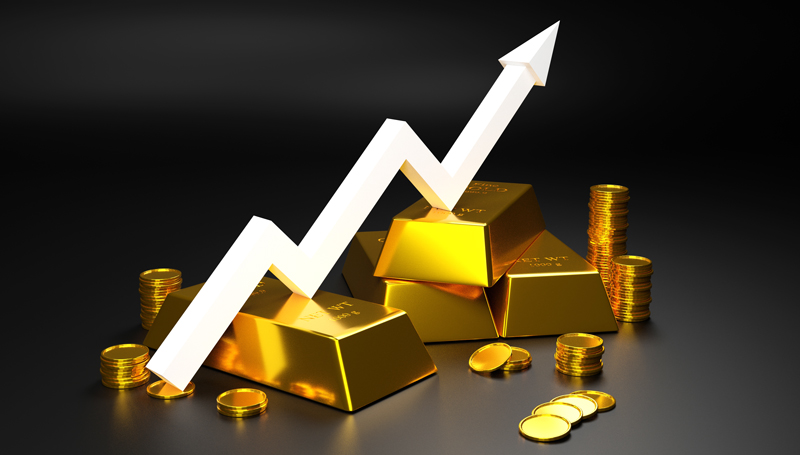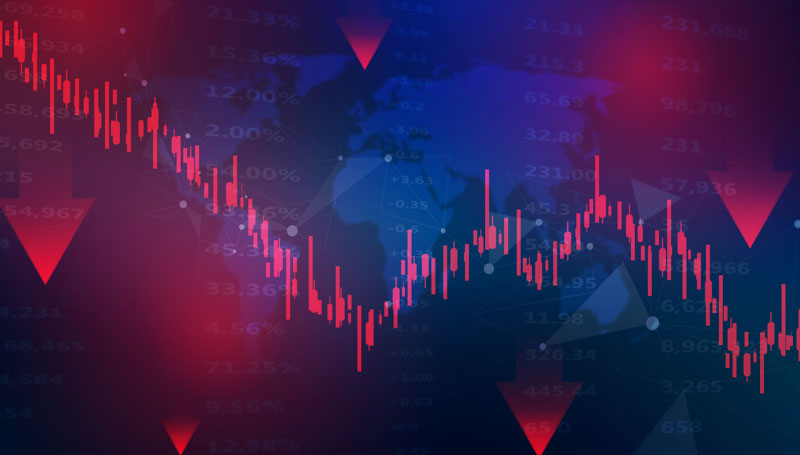
17.06.2020 – Special Report. Mysterious gold: Rarely has the flooding of the market with freshly printed money spoken so much for the metal. Buy index funds, buy central banks. Nevertheless, the price is not making much progress. But what is not, can still become. Especially since Guggenheim Investments has thrown an interesting idea into the ring: The massive purchase of gold by the Federal Reserve – a quantitative easing for the people. We highlight the backgrounds.
Funds report new records for gold
The World Gold Council (WGC) lobby group has just reported impressive figures: Gold holdings in index funds around the world reached a new record high in May. Exchange Traded Funds (ETF) bought a total of 154 tonnes in the first five months of the year – 3,510 tonnes are now in the vaults. This year, 33.7 billion dollars have already been transferred to the ETF, exceeding the previous record from 2016.
In North America, stocks are also at an all-time high. Here funds have bought 102 tonnes to date and according to the World Gold Council are sitting at 1,736 tonnes – the reserves have thus exceeded the previous high from December 2012. The “Wall Street Journal” recently reported a gold rush in New York: In the basements of the New York Mercantile Exchange the record level of 29.7 million troy ounces is resting – three quarters of which have arrived in the last three months.
Fund stocks ahead of prices
Perhaps the funds are an important indicator of bullish gold bugs: If we look at this chart, we see that the holdings in index funds were usually ahead of the gold price. And so it is only a matter of time until gold in dollars marks a new all-time high.

Central banks are purchasing
Especially as the central banks are also continuing to increase their stocks – they had bought 142 tonnes by April. Although this was far below the 650 tonnes from the first four months of 2019, Russia has now stopped its purchasing programme. However, experts suspect that there are a high number of unreported cases in China. For the seventh month in a row, Beijing did not provide data to the International Monetary Fund.
Interestingly, Turkey stood out until April – it increased its reserves by almost 39 tonnes to 524 tonnes. CFD traders who are invested in the Turkish Lira should take this as an indication as to the further development of the currency: Apparently Ankara has hedged itself with gold against the decline of the lira.
That speaks for gold
According to the WGC 2020 Central Bank Survey one fifth of the central banks plan to increase their gold holdings in the next twelve months. The reasons: The global shutdown in the wake of Covid-19, new tensions between China and the USA and rising unemployment in the Western world. Last, but not least, the central banks have pumped fresh money into the market as never before. In fact, the Federal Reserve has just signalled that it will probably maintain the current interest rate level of almost zero percent until the end of 2022.
Guggenheim demands Gold QE by the Fed
And this brings us to an extremely interesting topic: Perhaps the Federal Reserve will soon have to buy more gold to support the dollar and to finally create inflation. This unorthodox step was recently called for by Scott Minerd, Global Chief Investment Officer of Guggenheim Investments – “the Fed should unleash a massive Fed gold purchase program that could echo a depression-era effort that effectively boosted the U.S. economy.
Buying gold at $5,000 an ounce
This means: The Fed should buy gold at a much higher price than the current market level – perhaps at $ 5,000 an ounce. This type of monetary expansion would not, like quantitative easing, take place only within the banking sector. Rather, they should have a direct influence on the household budgets of gold bugs around the world – and thus achieve the desired effect on inflation expectations. According to the Guggenheim expert, the world’s consumers can’t do anything with obscure bonds or the effects of a zero or negative interest rate – so the effect of monetary policy steps on the financial market is limited. With gold, on the other hand, savers would have experience all over the world. And therefore other central banks around the world are likely to follow suit, Minerd said confidently.
Break the Glass
The expert argued that in the end, the Fed is left with only this tool. Because all other tools would become blunt: The market is already pricing in a zero interest rate for the next five years. In addition, the prospect of attracting fresh capital in a new, regular QE is low in view of the American multi-trillion dollar deficit. A negative interest rate would also be a severe blow for the US banks. Buying shares is also a political risk. The Fed would have to break the glass as the ultima ratio – that is, smash the window in front of the emergency alarm.
Dollar at risk
For at some point, in view of the monetary expansion, the dollar will be in danger: „With the Fed going all-in on financing the government deficit, the U.S. dollar could be at risk to negative speculation of its status as the dominant global reserve currency. Investing in gold may help offset this trend. The accumulation of gold as a reserve asset historically has been seen as a responsible policy response in periods of crisis.“ Gold could therefore offer the security for the greenback as an underlying.
Gold QE helps consumers directly
Only by taking such an unorthodox step could the Fed finally bring about moderate inflation of 2 to 3 percent – which would reduce the debt burden over time and also increase middle class wages. So much for the Guggenheim expert.
We think: Such a “quantitative easing for the people” would indeed be an enormously interesting idea. Currently, a lot of cheap money remains stuck in the banks or in zombie companies that keep themselves alive through bonds. In the real economy, only a few companies or house builders and craftsmen benefit from low interest rates. A massive gold purchase, on the other hand, would make millions of gold bugs rich – and tempt them to go shopping, travel and invest. Needless to say, what consequences a Gold QE would have for the gold price – the sky is the limit.
The Bernstein Bank will keep an eye on the matter for you – we wish you successful investments!
Important Notes on This Publication:
The content of this publication is for general information purposes only. In this context, it is neither an individual investment recommendation or advice nor an offer to purchase or sell securities or other financial products. The content in question and all the information contained therein do not in any way replace individual investor- or investment-oriented advice. No reliable forecast or indication for the future is possible with respect to any presentation or information on the present or past performance of the relevant underlying assets. All information and data presented in this publication are based on reliable sources. However, Bernstein Bank does not guarantee that the information and data contained in this publication is up-to-date, correct and complete. Securities traded on the financial markets are subject to price fluctuations. A contract for difference (CFD) is also a financial instrument with leverage effect. Against this backdrop, CFD trading involves a high risk up to the point of total loss and may not be suitable for all investors. Therefore, make sure that you have fully understood all the correlating risks. If necessary, ask for independent advice.












